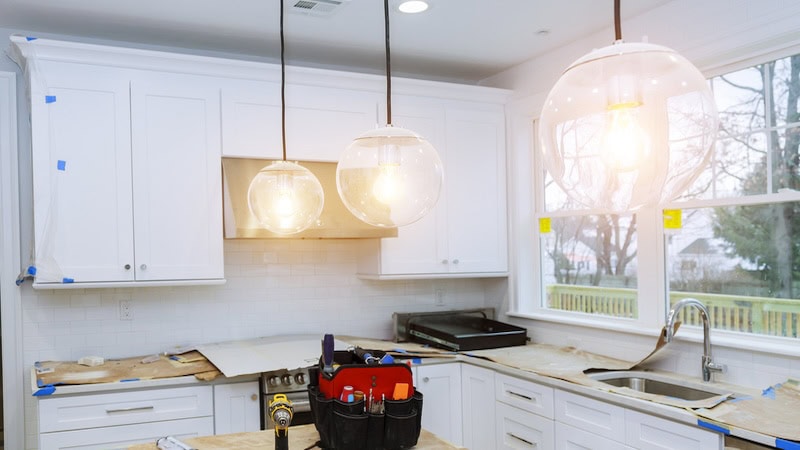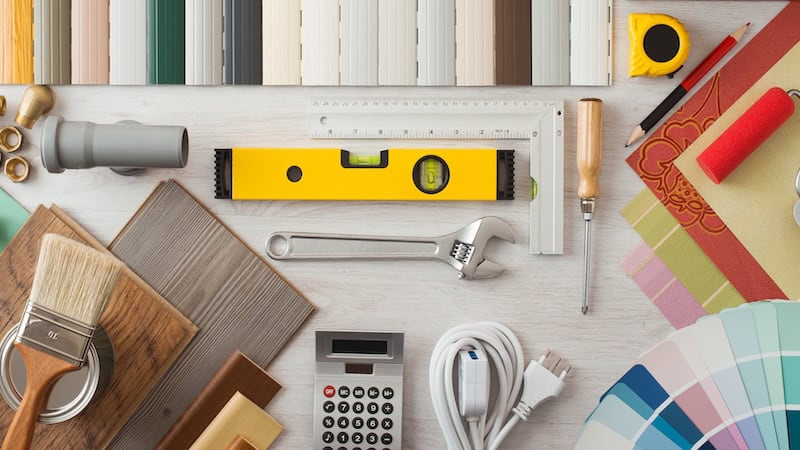A House That Works For Everyone
Universal design makes life easier and enhances independence
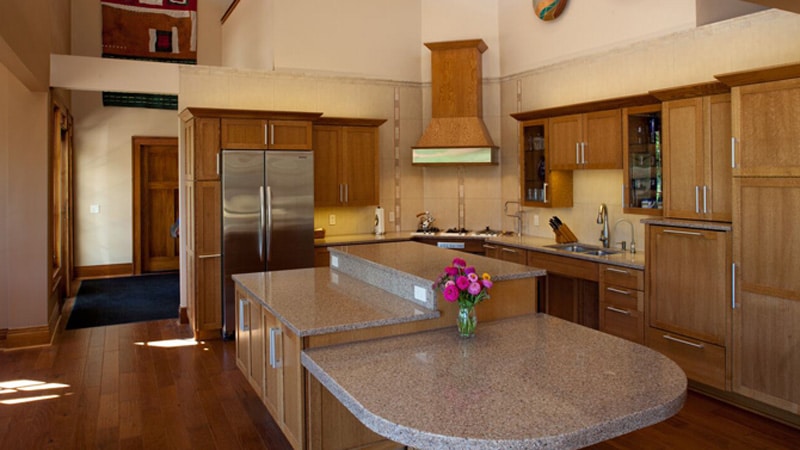
People expect “home” to provide independence, accessibility, safety and peace of mind – regardless of disabilities, limitations or health challenges. Many are choosing to stay in their homes for as long as possible to avoid moving to senior-care communities.
This movement isn’t restricted to people who are aging. It applies, as well, to patients with sudden health changes – due to accidents, stroke, spinal cord injury – as well as to those with degenerative conditions such as arthritis, amyotrophic laterals sclerosis (ALS), dementia, muscular dystrophy, multiple sclerosis or Parkinson’s Disease.
If you share the desire to remain at home, will the house where you are living sustain your independence for years to come? Could you come home after a hospital visit to recover from surgery or illness, or would you need to go to a rehabilitation or nursing facility? As your mobility diminishes, what home modifications and changes would be essential to ensure accessibility and safety?
A FIRST-HAND UNDERSTANDING
On June 13, 1998, my husband, Mark Leder, and I went for a bicycle ride on a rural wooded trail in Granville, Ohio. After riding for a few minutes, Mark thought he heard a gunshot and slowed down to investigate. As he scanned the scene he saw a large tree falling. He shouted, “Stop!” But the warning was too late. I was crushed by a 7,000-pound tree and paralyzed from the waist down.
Coming home from the hospital in a manual wheelchair after my spinal cord injury, I realized how my two-story home intensified my disability. My husband and I knew that we had to sell our home and find something more suitable.
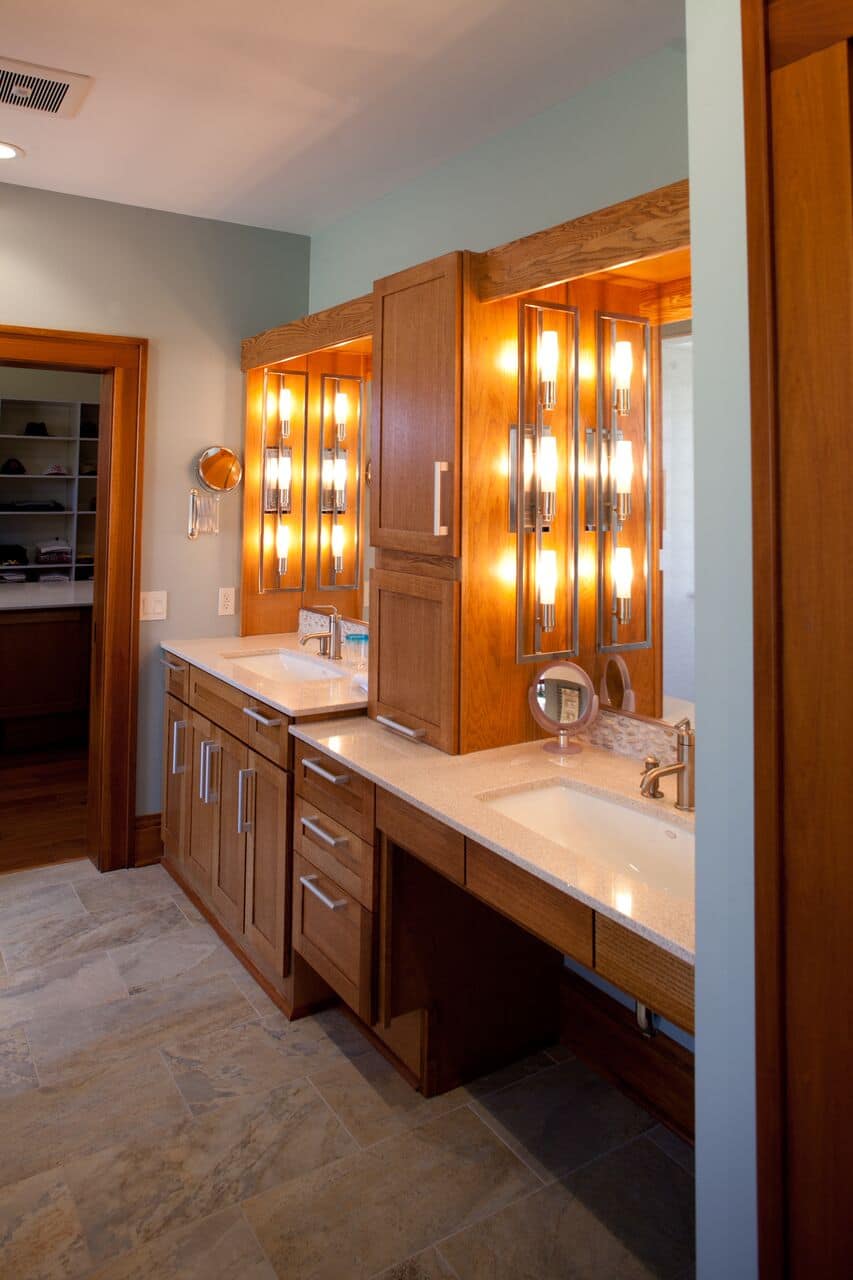
In September 2004, we hired an architect to draw the house plans for our new home in Columbus, Ohio. There was a steep learning curve for me in ramping up to build our home. We assembled a team of interior designers and over 200 corporate contributors to assist us. Serving as the general contractors, my husband and I spent 32 months building our home.
This home, named the “Universal Design Living Laboratory,” is the top-rated universal design home in North America, earning three national universal design certifications (view our home at UDLL.com).
The concept of universal design has been embraced by architects, interior designers, and other design and building professionals since the 1980s. It is a framework for the design of living and working spaces and products benefiting the widest possible range of people in the widest range of situations without special or separate design. Universal design is human-centered design, accommodating people of all sizes, ages and abilities.
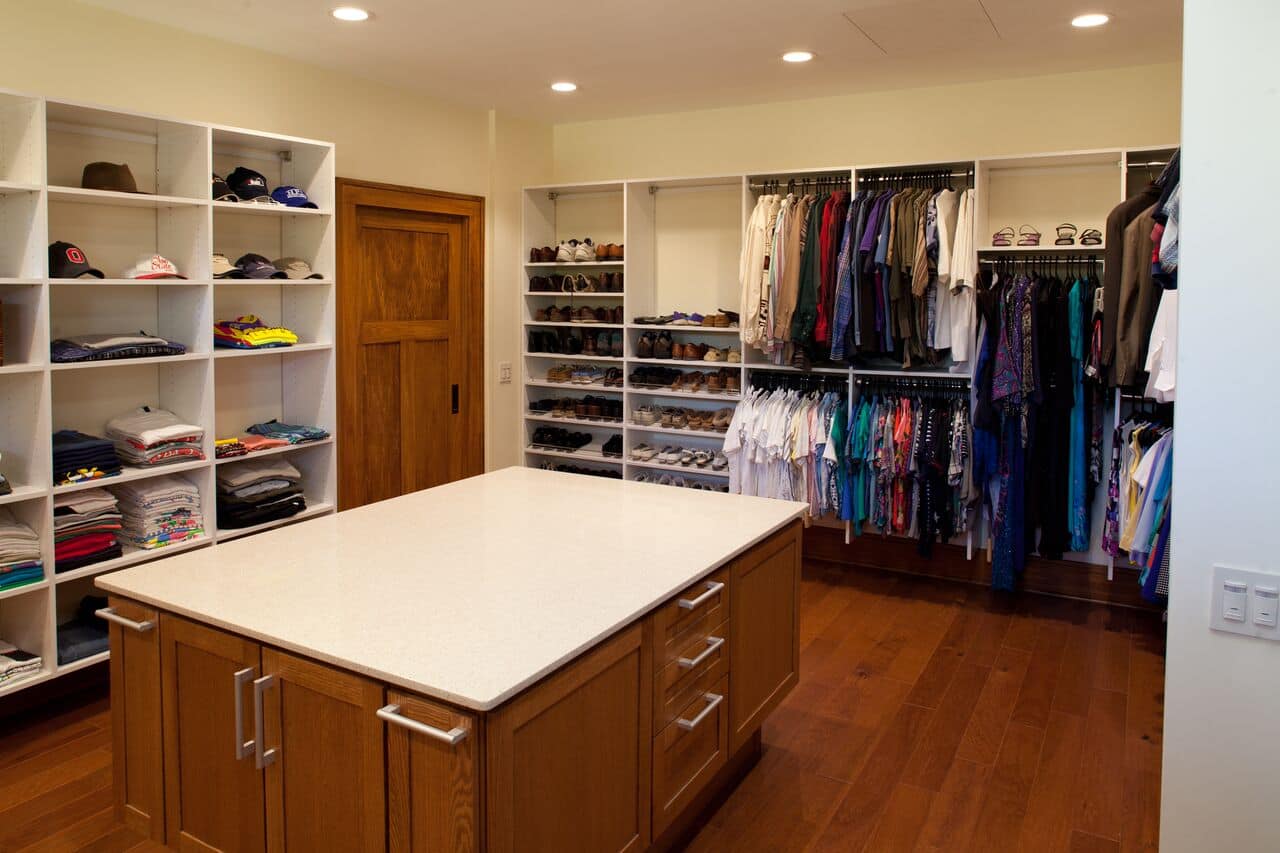 Having lived in the Universal Design Living Laboratory using a wheelchair for the past five years gives me a unique perspective. I have learned the importance of space planning and that small differences in the width of a door, height of a threshold or slope of a ramp can impact a person’s independence. I have experienced the joy of rolling on hardwood and tile flooring. No longer do I have sore shoulders as I did when rolling on the carpet in my previous home. Safety features like grab bars in the toileting area and shower have kept me from falling, and they make transfers easier.
Having lived in the Universal Design Living Laboratory using a wheelchair for the past five years gives me a unique perspective. I have learned the importance of space planning and that small differences in the width of a door, height of a threshold or slope of a ramp can impact a person’s independence. I have experienced the joy of rolling on hardwood and tile flooring. No longer do I have sore shoulders as I did when rolling on the carpet in my previous home. Safety features like grab bars in the toileting area and shower have kept me from falling, and they make transfers easier.
Life is easier when a home includes universal design features and products.
SUPPORTING INDEPENDENCE WITH UNIVERSAL DESIGN FEATURES
As people plan to remodel or build a new home, independence, accessibility, safety, convenience and usability features need to be top of mind in the design phase. These suggested guidelines, features and products help create homes that make life easier, especially for those who use a wheelchair.
Throughout the home
- Door thresholds should be one-half inch or less, and exterior and interior doors 36 inches wide.
- Elevators or stair lifts may be necessary for multiple-story homes.
- Hardwood, tile, composite materials and linoleum are easier to navigate when using wheelchairs or walkers.
- Natural and artificial lighting increases safety for all.
- Electrical outlets and light switches should be located where a seated person can reach them.
In the kitchen
Universal design features in the kitchen include the overall design of the circulation pattern, cabinet design, countertop height and appliance selection.
- A minimum 5-foot turning radius throughout the kitchen allows a person who uses a wheelchair the ability to do a 360-degree turnaround. Power wheelchairs and scooters may need additional space.
- Side-hinged ovens are preferable to those hinged at the bottom,
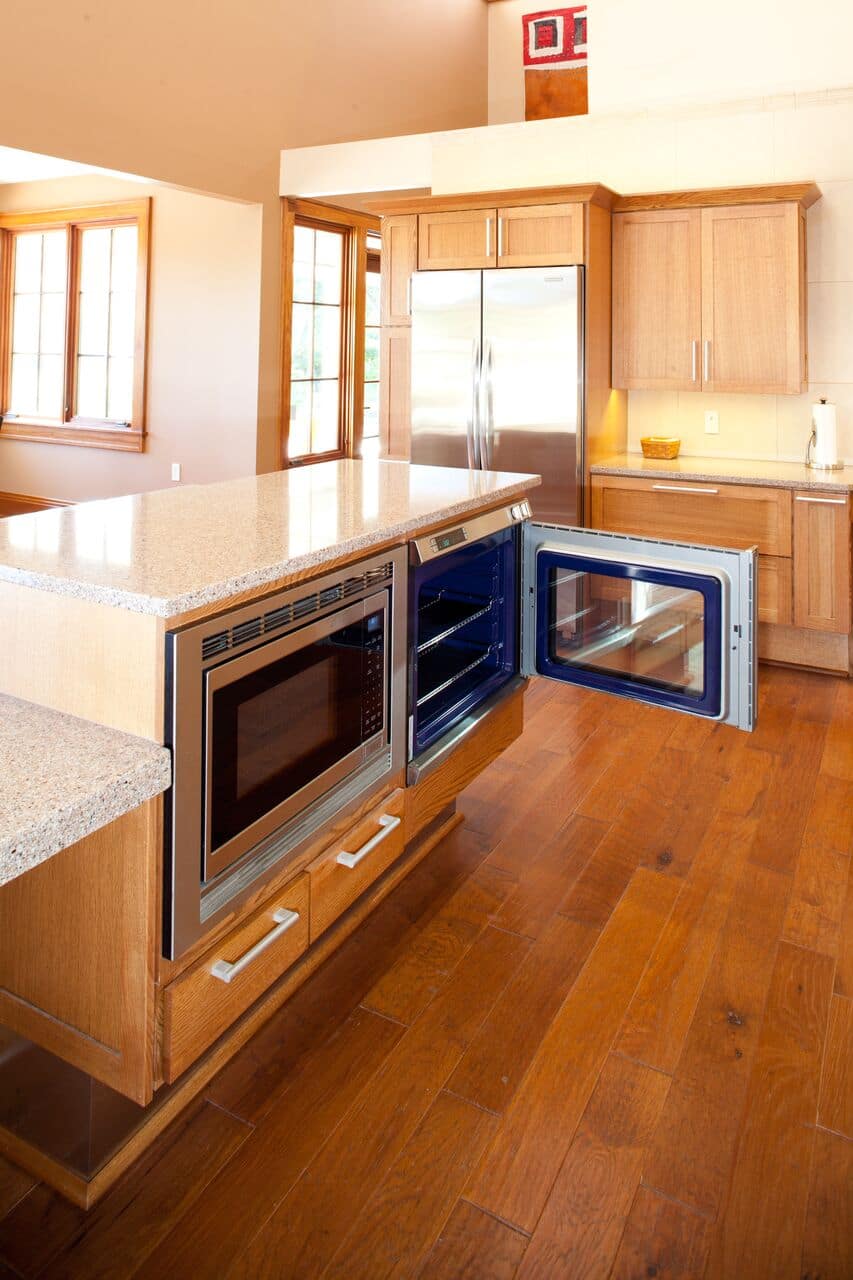
The height of appliances and control panels as well as side-hinged doors enable ease of access installed at a height that is easy to reach from a wheelchair.
- Cooktop controls and ventilation control panel at the front and at waist height make them accessible by all.
- Multiple countertop heights, such as 40, 34 and 30 inches, accommodate a diverse population. A 30-inch countertop with knee space underneath works well for someone who remains seated during meal preparation.
- At least half of the storage space should be accessible from a seated position, including drawers and cabinet shelves.
- Cooktops and sinks with knee space beneath make for user-friendly work areas. This space can be hidden by removable or retractable doors.
- A dishwasher raised 16 inches off the floor eliminates the need to bend down low.
- Side-by-side refrigerator/freezers provide easier access from a seated position.
In the bathroom

Accessible bathrooms meet needs for convenience, safety, privacy and independence.
- Curbless showers with channel drains are a must-have feature.
- Showers must be large enough to transfer a person and allow for an assistant when needed.
- Shower chairs or benches can be mounted on the wall or used in portable form.
- Handheld shower nozzles and an adjustable height vertical bar make showering easier.
- Grab bars need to be accessible to toilets and showers.
- Toilets seats should be 17 inches off the floor.
In the laundry room
- Space to accommodate a 5-foot turning radius makes navigation easier.
- Front-loading washers and dryers on pedestal drawers position these appliances to be accessible for a standing or a seated person.
- A sink with knee space underneath allows all users to wash clothes by hand.
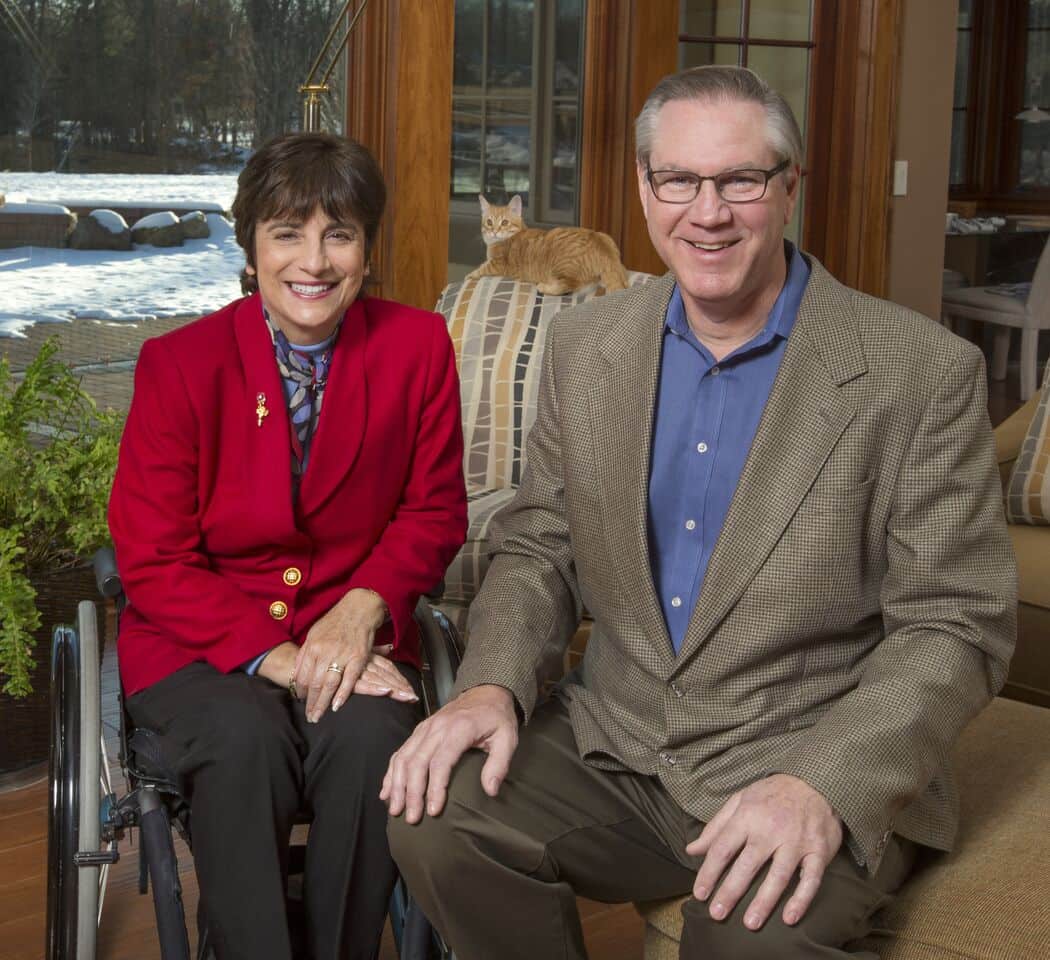
IMPROVED QUALITY OF LIFE BEYOND INDEPENDENCE
By following universal design guidelines, a home will provide an improved quality of life for all occupants, not only those with disabilities. In addition to having more freedom in a home due to universal design, a home may also provide improved convenience and safety, restore human dignity and provide peace of mind.
Plan now for home renovations or a move into a different home. Make a wise decision and be proactive before realizing that the configuration of your house is limiting your ability to function in your home.
Rosemarie Rossetti, Ph.D. is a speaker, consultant and author (RosemarieSpeaks.com). Her newest resource, Universal Design Toolkit, is an illustrated 200-page e-book with online videos and webinars (UDLL.com/boomer). Virtual tours, videos and articles on the Universal Design Living Laboratory are available at UDLL.com.
